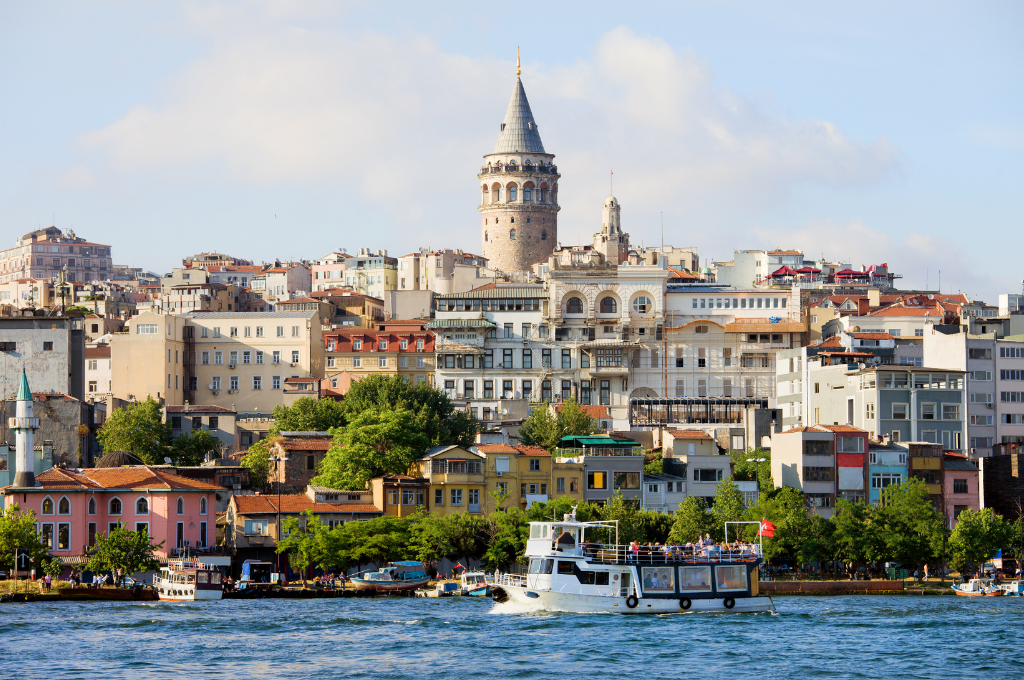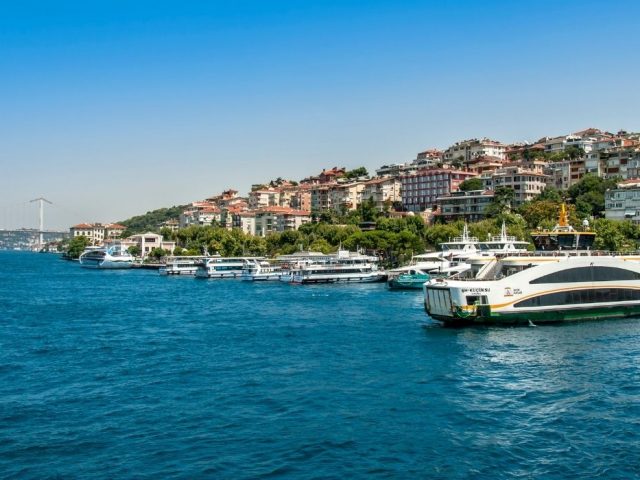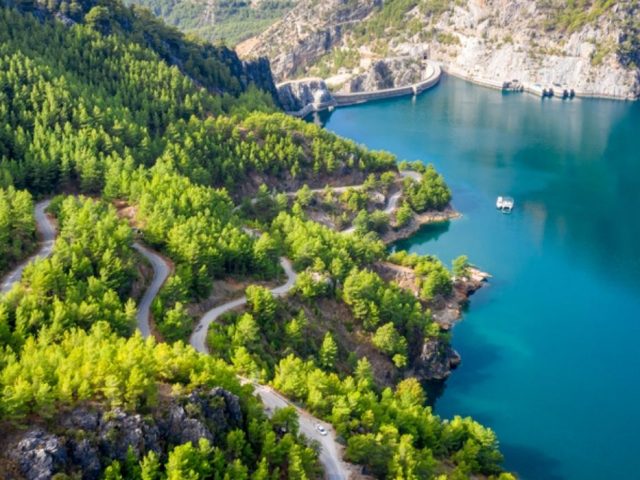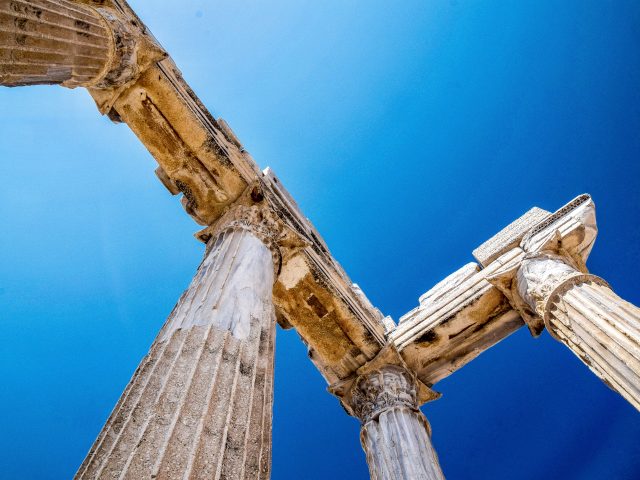Istanbul is not only a city but also a living open-air museum, where history accumulates layer by layer, hiding a different story in every corner. This unique metropolis, which has been the capital of empires for centuries, also fascinates with its architecture. Byzantine, Ottoman and Republican era artefacts intertwined with modern buildings turn exploring Istanbul into an endless adventure. These buildings, which all come from different periods, but make Istanbul Istanbul as a whole, will make you feel the city beyond sightseeing.
A reminder before we start: Don’t forget to download the Piri Guide mobile app to visit the places listed and much more with your personal and digital tour guide step by step!
Basilica Cistern
The Basilica Cistern, built during the reign of Justinian, is one of the most mysterious structures of Istanbul. It is thought that there were around a thousand cisterns in the Historical Peninsula in the past. The Basilica Cistern is the largest among them. It was built by the Romans to meet the water needs of the city. Water is drawn from various places such as rainwater and springs from the Belgrade Forest. Columns left over from different structures were used in the cistern, which was built with the spolia method. Therefore, it is possible to see many architectural details from ornate columns to plain ones. The most famous feature of the cistern is the upside down Medusa head. Why it is there is still controversial. Some think that it was placed for protection, while others say that they used this head because they had no other pieces left.
Fener Greek High School
Fener Greek High School is one of the most magnificent buildings in Istanbul. This building, which adorns Fener with its majesty, is exactly 144 years old. It was built by one of the 19th century’s most important architects, Dimadis. He was also a graduate of Fener Greek High School. The striking feature of the building is its red colour. Fire bricks specially brought from Marseille form the basic structure of the building. For this reason, it is also known as the ‘Red School’. Although the school looks big and splendid from the outside, it is quite narrow inside. It resembles a theatre stage or an eagle’s wing.
Cité de Péra
Çiçek Passage, which started to be built in the second half of the 1870s, is one of the buildings built after the ‘Great Pera Fire’. It was built by Restaki Efendi, an Ottoman banker of Greek origin. Although its original name was Cité de Péra, it became known as ‘Çiçek Passage’ in time. The reason for this is the White Russian immigrants who came to Istanbul after the Bolshevik Revolution of 1917. Some of these immigrants, who faced financial difficulties, started to work as florists in Beyoğlu. In time, when these florists multiplied in and around the passage, the building took the name ‘Flower Passage’ among the people.
If you are curious about the continuation of the deep-rooted story of Çiçek Pasajı, you can find much more in Piri’s Beyoğlu audio tour. All you have to do is download Piri.
Istanbul Museum of Modern Art
The new Istanbul Modern building bears the signature of the famous Italian architect Renzo Piano and his team. The same team also designed the Pompidou Centre in Paris, the NEMO Science Museum in Amsterdam, the Whitney Museum of American Art in New York and the famous Potsdamer Square in Berlin. On the ground floor, which is enclosed by glass, it is aimed to let the Bosphorus, the opposite Historical Peninsula and Tophane fill the interior. Thanks to this smooth transition, you do not feel completely detached from the outside world when you enter the museum. While the first floor of the museum is reserved for temporary exhibitions, events and offices, the second floor displays Istanbul Modern’s contemporary art collection. The most striking part of the building, apart from the artefacts, is undoubtedly the terrace! There is a very shallow puddle of water on the terrace. This both attracts seagulls to the building and visually connects the building with the waves of the Bosphorus by gently shaking with the wind.
Pera Palas Hotel
Pera Palas is one of the most important buildings built as a product of the movement to make Beyoğlu ‘the centre of Westernised and modernised Turkey’. It was opened in 1895 to host distinguished guests coming to Istanbul. However, the most precious guest of the hotel is undoubtedly Mustafa Kemal Atatürk. Room 101, where he stayed, can be visited today as a ‘museum-room’. In addition, world-famous names such as Agatha Christie, İsmet İnönü, Jacqueline Kennedy, Tito, Alfred Hitchcock and Ernest Hemingway stayed here. According to some sources, even famous spies such as Mata Hari and Cicero stayed in this hotel.
Minerva
Minerva Han started to serve as the Bank of Athens in 1913. It is the last building built on the street where it is located. Minerva, which gives its name to the inn, is the equivalent of Athena, the goddess of wisdom and art in Roman mythology. This building, which seems to be influenced by Italian architecture, was one of the first reinforced concrete buildings in Istanbul, so it was less affected by fires and underwent less restoration. The building still uses its original lift today. Its facade is decorated with mythological elements reflecting European architecture. In the reliefs above the entrance door, there are two horns of fertility symbolising abundance and the bust of Minerva in the centre. Details such as Hermes, the snake symbolising medicine and Venus statues are also hidden at different points of the building.
Galata Tower
Galata Tower, one of the oldest towers in the world, is famous for the legend of Hezarfen Ahmet Çelebi in Evliya Çelebi’s Seyahatnâmesi: It is said that he took off from here with the wings he made himself and flew all the way to Üsküdar. It was first built as a lighthouse during the Byzantine period under the name of ‘Jesus Tower’, and then it was known as the ‘Great Bastion’. In time, it was used as an observatory, observatory, and even a prison; from the 18th century it became a fire watch tower. Despite surviving several fires and storms, the tower is still standing today, offering the most iconic views of Istanbul.
Istanbul’s stories never end. Don’t forget to download Piri Guide to visit Istanbul step by step with your personal guide.
If you are looking for inspiration for exploration, you may also be interested in our Beyoglu guide.




